
Newcastle upon Tyne, or simply Newcastle, is a city and metropolitan borough in Tyne and Wear, England. It is England's northernmost metropolitan borough, located on the River Tyne's northern bank opposite Gateshead to the south. It is the most populous settlement in the Tyneside conurbation and North East England.

Gateshead is a town in the Gateshead Metropolitan Borough of Tyne and Wear, England. It is on the River Tyne's southern bank. The town's attractions include the twenty metre tall Angel of the North sculpture on the town's southern outskirts, The Glasshouse International Centre for Music and the Baltic Centre for Contemporary Art. The town shares the Millennium Bridge, Tyne Bridge and multiple other bridges with Newcastle upon Tyne.
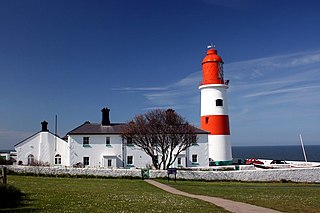
South Tyneside is a metropolitan borough in the metropolitan county of Tyne and Wear, England.

South Shields is a coastal town in South Tyneside, Tyne and Wear, England; it is on the south bank of the mouth of the River Tyne. The town was once known in Roman times as Arbeia and as Caer Urfa by the Early Middle Ages. It is the fourth largest settlement in Tyne and Wear, after Newcastle upon Tyne, Sunderland and Gateshead.

The Tyne Bridge is a through arch bridge over the River Tyne in North East England, linking Newcastle upon Tyne and Gateshead. The bridge was designed by the engineering firm Mott, Hay and Anderson, who later designed the Forth Road Bridge, and was built by Dorman Long and Co. of Middlesbrough. The bridge was officially opened on 10 October 1928 by King George V and has since become a defining symbol of Tyneside. It is ranked as the tenth tallest structure in Newcastle.
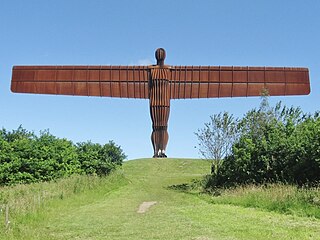
The Metropolitan Borough of Gateshead is a metropolitan borough in the metropolitan county of Tyne and Wear, England. It includes Gateshead, Rowlands Gill, Whickham, Blaydon, Ryton, Felling, Birtley, Pelaw, Dunston and Low Fell. The borough forms part of the Tyneside conurbation, centred on Newcastle upon Tyne. At the 2021 census, the borough had a population of 196,154.
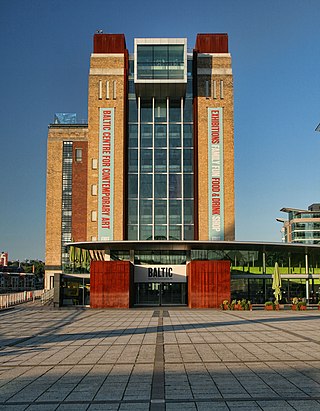
Baltic Centre for Contemporary Art is a centre for contemporary art located on the south bank of the River Tyne in Gateshead, Tyne and Wear, England. It hosts a frequently changing variety of exhibitions, events, and educational programmes with no permanent exhibition. The idea to open a centre for contemporary arts in Gateshead was developed in the 1990s, which was a time of regeneration for the local area—the Sage and Gateshead Millennium Bridge was also being conceived of in this period.
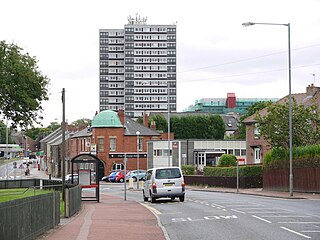
Felling is a town in the Metropolitan Borough of Gateshead in Tyne and Wear, England. Historically part of County Durham, the town became part of the metropolitan borough of Gateshead in 1974. It lies on the B1426 Sunderland Road and the A184 Felling bypass, than 1 mile (1.6 km) east of Gateshead, 1 mile (1.6 km) south east of Newcastle-upon-Tyne and 10 miles north west of the City of Sunderland. In 2011, Felling had a population of 8,908.
"Blaydon Races" is a Geordie folk song of 1862, with lyrics by George Ridley written in a style deriving from music hall. It celebrates the horse races held at Blaydon in North East England that year, although mostly composed in advance of the event. The words were inspired by the American ballad "On the Road to Brighton", to the tune of which they are set. The song has become a local anthem, and is frequently sung by supporters of Newcastle United Football Club, Newcastle Falcons rugby club, and Durham County Cricket Club.
Sheila Fell was an English artist. She was born at Aspatria, Cumberland, in 1931. Although she lived in London for the greater part of her life, she devoted her career to painting the Cumberland landscape.

Ralph Hedley was a realist painter, woodcarver and illustrator, best known for his paintings portraying scenes of everyday life in the North East of England.
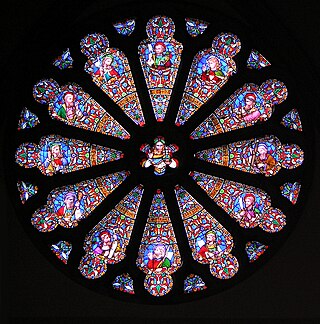
William Wailes (1808–1881) was the proprietor of one of England's largest and most prolific stained glass workshops.

John Chambers was a landscape, seascape and portrait painter in oil, tempera and watercolour, and an etcher and illustrator.
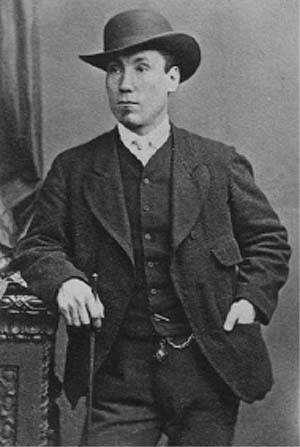
James Renforth was an English Tyneside professional oarsman. He became the World Sculling Champion in 1868 and was one of three great Tyneside oarsmen, the other two being Harry Clasper and Robert Chambers.
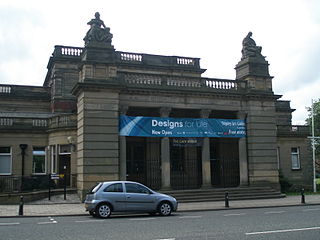
The Shipley Art Gallery is an art gallery in Gateshead, Tyne and Wear, England, located at the south end of Prince Consort Road. It has a Designated Collection of national importance.
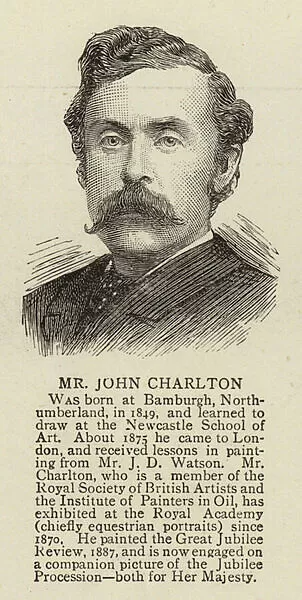
John Charlton (1849–1917) was an English painter and illustrator of historical and especially battle scenes, mainly from history contrmporary to him.

Thomas Wilson was a Tyneside poet, from Low Fell in County Durham. His most famous work, written in the Geordie dialect, is The Pitman's Pay, originally published between 1826 and 1830.
Thomas Harrison Hair was a British artist most famous for depictions of industrial scenes in north-eastern England in the first half of the nineteenth century.

Henry Perlee Parker (1785–1873) was an artist who specialised in portrait and genre paintings. He made his mark in Newcastle upon Tyne in the 1820s through patronage by wealthy landowners and through paintings of large-scale events of civic pride. Over a period of forty years his work was exhibited at the Royal Academy and the British Institution in London. Coastal scenes of fisherfolk and smugglers were a popular specialism. Through the distribution and sale of mezzotint prints of subjects such as William and Grace Darling Going to the Rescue of the SS Forfarshire, Parker became one of the north-east's best-known nineteenth-century artists. In Newcastle upon Tyne he was central to the setting-up of a Northern Academy for the Arts. Later, in Sheffield, he taught drawing at the Wesleyan Proprietary Grammar School, and in his later years he lived in Hammersmith, London. He had a large family and was married three times.
John Atlantic Stephenson was a Tyneside businessman and poet and amateur artist in the latter half of the 19th century. He was best known for his recitations.
















